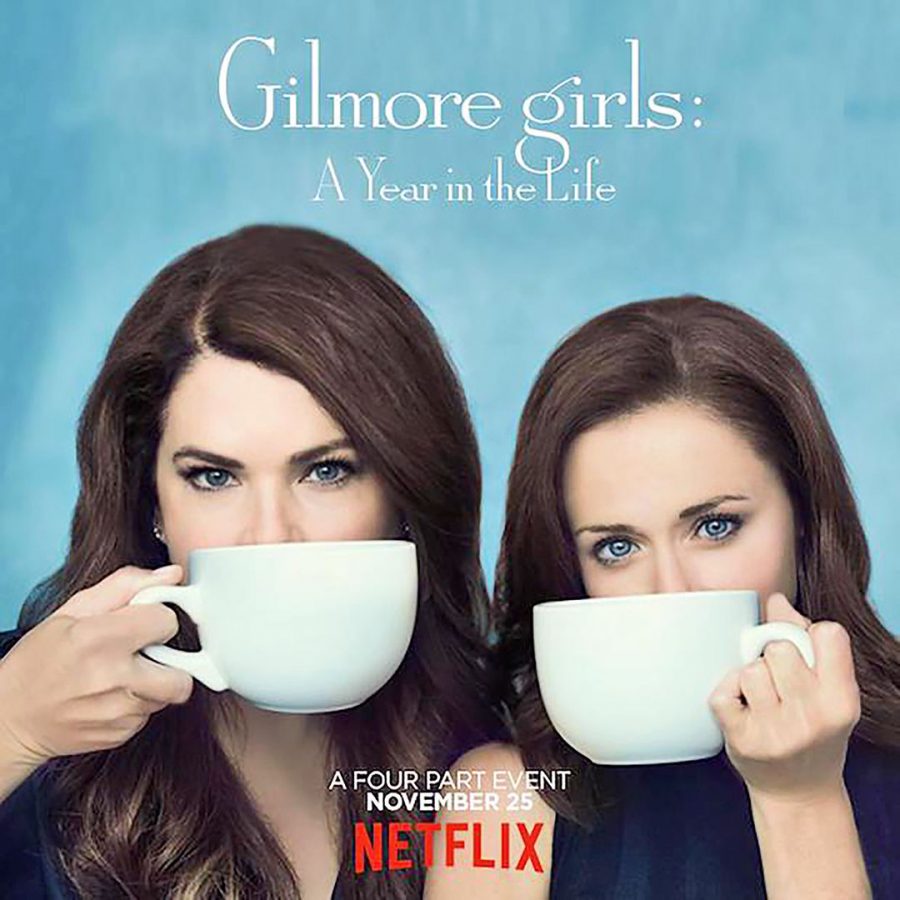Gilmore, No More: Revival sacrifices 16-year legacy for 4 cheap words
This is a picture of three really happy people.
In the image below, there’s my mom, my 11-year-old sister and me.
We’re about to watch, “A Year In the Life,” the four-part “Gilmore Girls” revival.
If you look closely enough, we’re even wearing commemorative Luke’s Diner t-shirts for the 6-hour marathon.
Sadly, there’s no post-marathon picture. But I’ll get to that in a bit.
Upon knocking out the minisodes with my favorite girls, I flocked to the Internet for consolation to see what others thought of the reboot.
Suffice it to say, I was met with surface-level garbage.
The New York Times’ James Poniewozik’s review would trigger any Gilmore fan’s gag reflex. Poniewozik goes for a weak, out-of-touch angle, making the non-topical argument that the setting of the reboot—identical to that of the original series—is like “Twilight Zone.” Nothing to mention of Rory’s lack of character development that results in an unexpected pregnancy. Nothing to mention of the pointless half-hour Broadway show digression. Nice try, Poniewozik.
In another review, a Rolling Stone article embraces a similar premise, claiming that fans of the show finally got the ending they wanted. (Proof?!) Meanwhile, discussion boards have been blowing up as fans share insights on the cyclical ending of the show and make conjectures as to who Rory’s baby daddy is. Believe me, that’s the least of our problems.
So why the disconnect? After nine years of waiting for the reboot fans thought would never come, why are reviews so abysmal? And after watching creator of the original series’ ideal ending, why do many of us feel so… unsettled?
No one wants to say this, but I will. “A Year In the Life” was disappointing as hell. In the words of Mrs. Kim, it sucked eggs. If this reboot is a Christmas present, it’s a n unwrapped, used pair of socks that are two sizes too small.
Too little, too late.
Rory’s character begins the mini-series, a floundering freelance writer without a dime to her name, traveling around the globe looking for work and casually shacking up with her college boyfriend who openly refuses to date her. Rory ends the show in a similar fashion, having now given up on journalism, passionless and pregnant in her hometown. The two bright spots of her life, detaching from her now-engaged fling and taking Jess’ advice to get moving and write, are dimmed by the realization that she’ll become a mother. Dimmed? This isn’t the Rory we know and love! Where’s Rory’s “Rosie the Riveter” gusto?
Yet unexpected motherhood isn’t the issue here, nor was it the issue when Lorelei became pregnant at 16. It’s that Rory has learned nothing. The now 30-something handles this curve ball the way she’s handled all curve balls, by running to Mommy or cute boy.
So what does a picture of three Gilmore fans pre-marathon, a flood of surface-level reviews, and my opinion as a lifelong fan have to do with each other? Rory’s aimless lifestyle and negative attitude are disjointed for the same reason that Gilmore fans have few adequate reviews to look to — bad writing and dashed dreams.
Once upon a time, the captions from “Gilmore Girls” were literature. From the time I was 4 to age 11, my mom and I experienced our favorite show as we experienced “Jane Eyre.”
Creator Amy Sherman-Palladino’s show resonated with us for its intimate understanding of the mother-daughter bond, our mother-daughter bond. But the show also flourished for its appeal to a cultured, word-savvy audience that supports strong female role models, especially single mother ones.
Unfortunately, Sherman-Palladino rested on her laurels, slacked on the script and let her husband go off-roading with the “Summer” episode’s script.
Despite the gorgeous struggle of Rory’s birth and upbringing, she learns nothing.
The reboot cancels out what the past 16 years have been about: learning how to be yourself and forging your own path, coffee cup in hand.
This incredible lesson from a mother-daughter duo and the quirky town that adopts them was sacrificed for the short-term gratification of a Netflix release and four words, which paired with Rory’s lackluster attitude, undo everything “Gilmore Girls” stands for.
My mom, sister and I still have our t-shirts, but I don’t see myself wearing mine any time soon.
Honestly, it would feel off-putting to represent a show whose once-positive, well-written message is now a watered-down commentary on the inevitability of generational curses.
Sherman-Palladino had four words for us. Well, we have four for her:
Thanks but no thanks.







